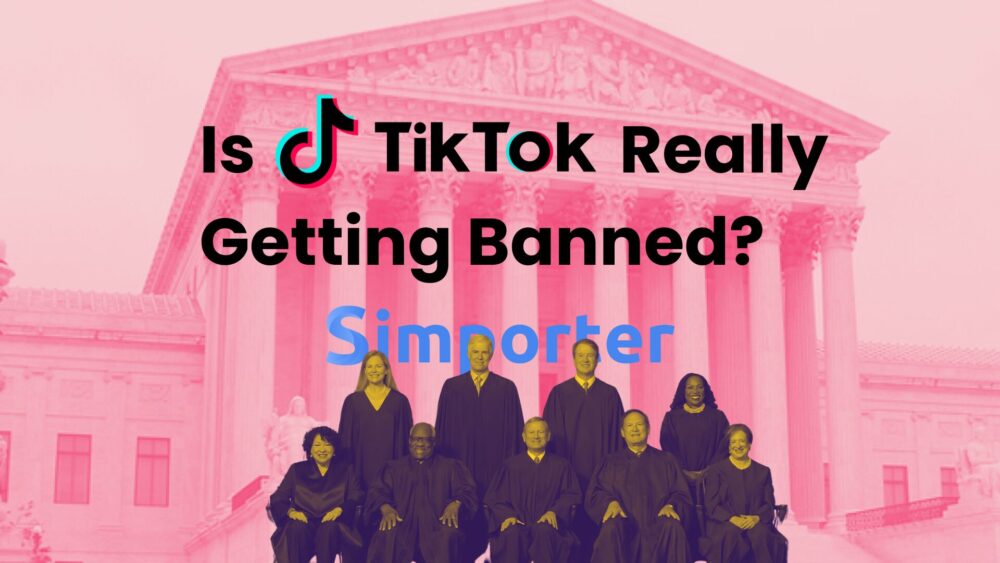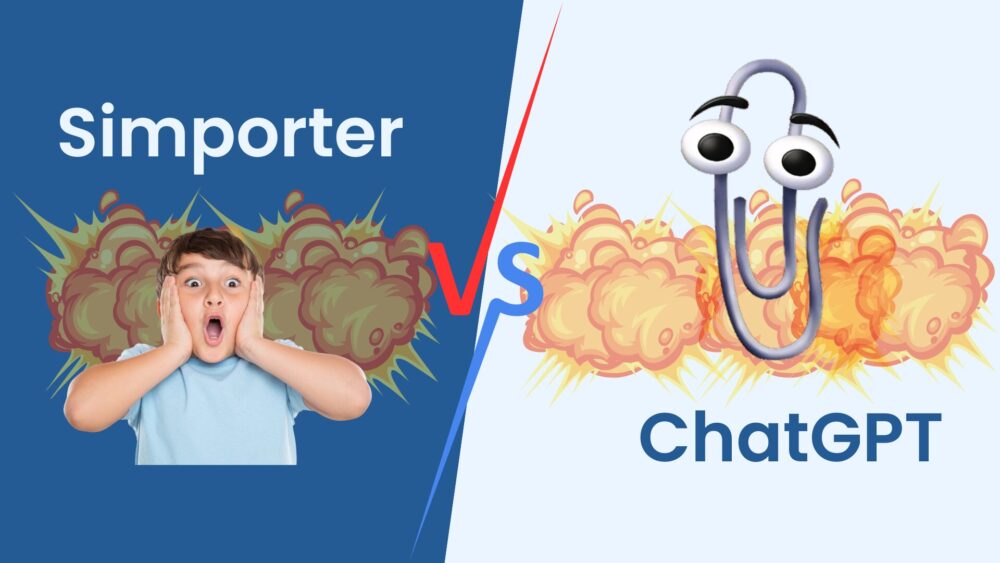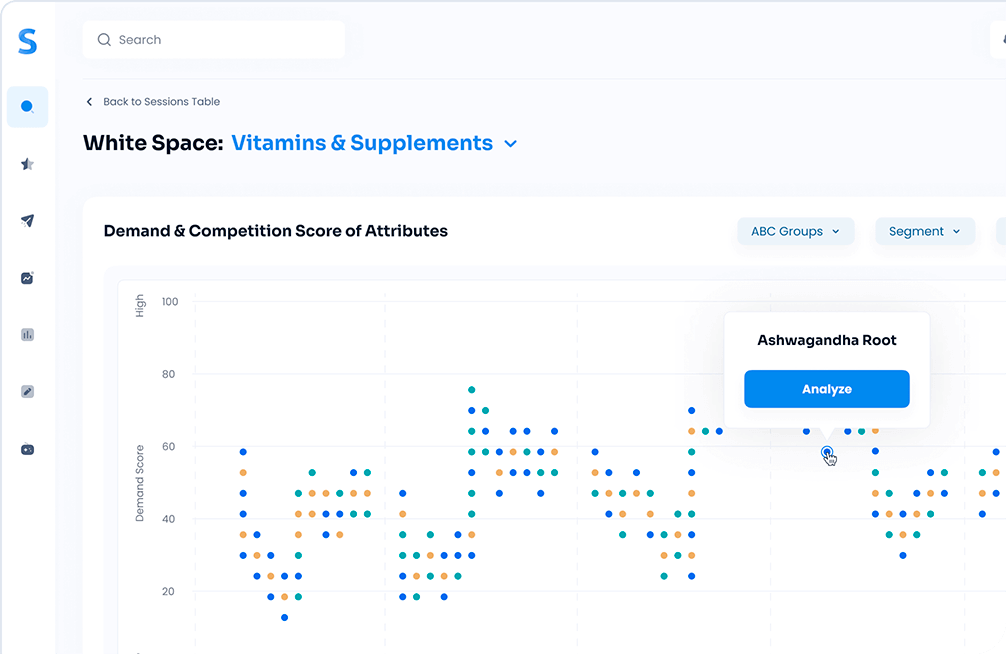Introduction
Here’s an insight you probably already know (it is not a surprise): modern CPG companies rely on detailed insights about consumer preferences to stay competitive. Traditional methods of collecting and analyzing consumer data often fall short in capturing these needs quickly enough. Again, you probably already know this. This is where AI consumer insights come into play, offering the ability to analyze data at lightning speed, interpret complex patterns, and predict emerging trends.
How many times in the last five years have you seen the famous Harvard Business School statistic, “95% of new products fail?” I remember when our team posted that number in giant text at our booth during a L’Oréal Technology Exhibition in Paris back in 2018. The problem has only gotten worse. But there are a lot more options to help today.
Technologies like machine learning, big data, and natural language processing (NLP) allow companies to gather meaningful insights from vast amounts of data. AI systems analyze everything from social media trends to purchasing habits, making it easier for brands to understand what their customers want and respond effectively. These AI consumer insights are now driving new product ideas, guiding more personalized marketing strategies, and helping companies achieve steady growth.

In this article, we’ll explore how CPG companies are using AI consumer insights to shape their strategies. By adopting AI tools, CPG brands can improve product development, optimize marketing, streamline supply chains, and enhance customer experiences, paving the way for future success.
Understanding AI Consumer Insights
Definition and Importance of AI Consumer Insights
AI consumer insights refer to information gathered and analyzed by AI systems to understand consumer behavior. These insights stem from large datasets, which AI tools analyze to uncover patterns, preferences, and trends. This data-driven approach to understanding consumers has become essential for companies wanting to make quick, strategic decisions.
AI consumer insights help companies understand market demand, identify opportunities for new products, and create tailored marketing messages. In a CPG context, these insights translate into products that better meet consumer expectations and campaigns that speak directly to the target audience. According to the MIT Sloan Management Review, AI’s ability to process large datasets more accurately than traditional methods means companies can operate with a much deeper level of insight.
Traditional vs. AI-Driven Insights
Traditional market research methods often rely on surveys, focus groups, and small sample sizes, which can be time-consuming and limited in scope. They may also miss evolving trends that can only be observed through real-time data. In contrast, AI consumer insights use machine learning algorithms to process vast amounts of data from a wide range of sources, including social media, transactional data, and customer feedback.
AI-driven insights offer a faster, more comprehensive view of the market. For example, AI tools can analyze thousands of online reviews in minutes, identifying common themes and sentiment. This is something traditional research methods would struggle to accomplish at scale. Harvard Business Review’s article, “How AI Is Streamlining Marketing and Sales”, illustrates how AI’s speed in analysis is an advantage for modern CPG brands. The shift toward AI allows companies to understand consumer behavior on a larger scale and respond more precisely to market trends.
Learn more about consumer insights in this Simporter guide on the importance of understanding customer behavior.

Key Components of AI Consumer Insights
Several components work together to create valuable AI consumer insights:
Data Collection: Big data is at the heart of AI consumer insights. CPG companies draw data from diverse sources like social media, purchase histories, and online browsing. Each source provides a piece of the puzzle, offering clues into consumer preferences and buying behavior.
Machine Learning: Machine learning algorithms power AI consumer insights by processing vast amounts of consumer data. As these algorithms “learn” from new data, they improve at predicting future behavior and identifying trends. This adaptive ability makes machine learning an essential tool for companies seeking accurate insights.
Natural Language Processing (NLP): NLP focuses on analyzing unstructured data, like customer reviews, social media comments, and survey responses. NLP allows AI to assess sentiment and context, helping companies understand how consumers feel about their products. With NLP, CPG brands can identify subtle shifts in customer preferences and adjust their strategies accordingly.
Applications of AI Consumer Insights in CPG
Product Development and Innovation
AI consumer insights play a major role in product development by highlighting emerging trends and unmet needs. These insights reveal what consumers are interested in, helping brands create products that resonate with them. AI can also track competitor offerings, allowing CPG companies to find gaps in the market or improve on existing products.
McKinsey’s report, “How AI Is Transforming Product Development”, illustrates how AI-driven insights can streamline the innovation process. With the right AI tools, brands can move quickly from idea to product launch, reducing time-to-market and ensuring their offerings align with current consumer preferences.
See Simporter’s guide to learn more about how AI concepts can help brands build better product ideas.

Marketing and Personalization
AI insights enable brands to craft highly personalized marketing campaigns. By analyzing consumer data, AI tools can segment customers by demographic, buying behavior, and personal preferences. These insights help companies create marketing messages that appeal to specific groups, increasing engagement rates and overall effectiveness.
Google Cloud’s article, “Personalization at Scale with AI”, shows how AI helps brands scale personalized marketing. By focusing on individual consumer preferences, CPG companies can build stronger relationships with their customers, driving loyalty and repeat purchases.
For more on how to apply consumer insights to marketing, visit Simporter’s guide.
Supply Chain Optimization
AI consumer insights also help improve supply chain operations, leading to better demand forecasting and inventory management. By analyzing historical sales data alongside real-time consumer trends, AI can help companies predict future demand more accurately. This reduces waste, prevents stockouts, and optimizes storage costs.
In their article, “AI and the Supply Chain: The Next Frontier”, MIT Sloan Management Review describes how AI-driven insights are reshaping supply chain strategies. For CPG brands, these improvements ensure products are available where and when they’re needed, enhancing efficiency and customer satisfaction.
Read about retail analytics in Simporter’s resource on how AI tools optimize retail operations.
Customer Experience Enhancement
AI consumer insights help CPG brands improve customer experiences by identifying individual preferences and tailoring services to meet them. By analyzing data from customer interactions, AI can suggest product recommendations, highlight potential areas for improvement, and even offer personalized support options. This customization leads to higher satisfaction and encourages brand loyalty.
Understanding the nuances of customer preferences allows companies to create experiences that feel more relevant to their audience. Whether through targeted ads, product recommendations, or improved service, AI consumer insights make it possible for CPG brands to connect more personally with each consumer.
Implementing AI Consumer Insights in CPG Enterprises
Integration Strategies
To truly benefit from AI consumer insights, CPG companies need effective integration strategies. Implementing AI involves more than just selecting the right software; it requires a cohesive approach that combines data management, team alignment, and an understanding of AI’s operational needs. The goal is to create a seamless process where AI insights are consistently used to inform decisions across departments.
One of the first steps for integration is consolidating data sources. Data must be collected, stored, and organized in a way that allows AI systems to access and analyze it efficiently. This process often involves setting up a central data platform where AI tools can pull data from social media, sales transactions, customer feedback, and other sources. Centralizing data helps streamline analysis, allowing the AI system to work faster and produce more accurate insights.
Training is also a critical aspect of integration. Teams need to understand how AI consumer insights work and how to interpret the information provided by these tools. For instance, marketing teams must know how to use insights to adjust messaging, while product development teams should learn how to align new ideas with emerging consumer trends. Cross-functional training can ensure everyone is on the same page, improving overall efficiency.
Another important step is creating a workflow that integrates AI insights into daily operations. Insights should inform all key decisions, from inventory planning to campaign management. IBM’s guide on “AI Integration: A Strategic Guide” offers a detailed approach to building a robust AI system that aligns with company goals and operational needs.
Read more about building a consumer insights stack in Simporter’s resource to explore ways to maximize AI-driven insights.

Challenges and Solutions
While AI consumer insights offer many advantages, implementing these tools comes with challenges. Issues like data privacy, integration costs, and a lack of AI skills within the team can make the process complex.
One of the major challenges is data privacy. As AI systems collect and analyze vast amounts of data, companies must comply with regulations like the GDPR in Europe and CCPA in California. These laws require businesses to handle consumer data responsibly, limiting the types of data that can be stored and used. To address these concerns, companies should implement strong data governance practices, ensuring data is used ethically and securely.
Another challenge is the initial cost of AI integration. Setting up AI tools, training employees, and building the necessary data infrastructure can be expensive. However, many companies find that the long-term benefits—such as improved efficiency, better customer experiences, and more accurate market predictions—make the investment worthwhile. CPG companies can start with smaller-scale AI tools to build experience and then scale up gradually.
Finally, the lack of AI expertise can be a hurdle. Many companies may not have employees with AI-specific skills, making it difficult to fully leverage AI consumer insights. To overcome this, companies can invest in training programs or hire AI specialists. Alternatively, they can partner with third-party providers who bring both the technology and expertise needed to get started.
The State of AI in the Enterprise, a study by Deloitte, provides an in-depth look at the challenges companies face when adopting AI and suggests ways to address them.
Case Studies
Several leading CPG brands have successfully adopted AI consumer insights to drive innovation and improve market responsiveness. These companies demonstrate how effective AI integration can provide valuable results.
For instance, one major beverage brand used AI to analyze social media conversations about flavor trends. By identifying a growing interest in a specific flavor, they quickly developed a new product to meet this demand. As a result, they launched a popular product that resonated with consumers, showcasing the power of AI in identifying trends and reducing time-to-market.
Another case involves a global personal care company that used AI consumer insights to improve its advertising strategy. By analyzing consumer sentiment and behavior, they discovered that certain messaging styles and channels had a higher impact on target customers. This insight led them to reallocate their marketing budget, focusing on the most effective channels and messages. The result was an increase in engagement and customer loyalty, proving that AI-driven insights can optimize marketing strategies.
These examples highlight how AI consumer insights can lead to practical benefits, from faster product launches to more effective advertising. By using AI to make smarter decisions, CPG companies can stay competitive in a fast-changing market.
Future Trends in AI Consumer Insights for CPG
Advancements in AI Technologies
As technology evolves, new AI developments are expected to enhance the quality and scope of consumer insights. Emerging technologies like deep learning, computer vision, and advanced natural language processing hold the potential to provide more detailed and accurate insights.
Deep learning, a subset of machine learning, enables AI to identify complex patterns in large datasets. For instance, deep learning algorithms could help CPG companies predict trends with even greater precision, uncovering patterns that were previously undetectable. Additionally, computer vision could allow AI systems to analyze images and videos on social media, helping brands understand visual trends and preferences that traditional text-based analysis might miss.
In “The Future of AI: Trends to Watch”, NVIDIA discusses the upcoming advancements in AI and their potential impact on industries, including CPG. Staying current with these developments will be essential for CPG brands looking to maintain a competitive edge.
Predictive Analytics and Its Expanding Role
Predictive analytics is another area of AI that’s expected to grow in importance. Predictive models use historical data to forecast future events, making them invaluable for planning. In the CPG industry, predictive analytics can provide insights into consumer preferences, likely product demand, and potential market shifts.
With predictive analytics, companies can anticipate trends before they fully emerge, allowing them to launch products at the right moment. For example, if predictive analytics indicate an upcoming demand for sustainable packaging, a CPG brand can start sourcing eco-friendly materials, ensuring it meets consumer expectations before competitors.
Ethical Considerations in AI-Driven Insights
As AI consumer insights become more advanced, companies must address ethical considerations in data collection and analysis. Issues like data privacy, transparency, and fairness are becoming increasingly important as AI tools become more integrated into consumer-facing businesses.
Data privacy remains a top concern, as consumers are more aware of how companies use their information. CPG companies must ensure they collect data responsibly and provide consumers with clear information about how their data is used. Transparency also involves making AI decision-making processes understandable, so consumers know why they are seeing certain product recommendations or ads.
The “Ethics of Artificial Intelligence” by Harvard Business School discusses these ethical challenges in-depth, underscoring the need for responsible AI practices.
By addressing these ethical concerns, CPG companies can build trust with their customers, showing that they value transparency and responsible use of AI.
Conclusion
AI consumer insights are reshaping the CPG industry, providing brands with a powerful tool for understanding and responding to consumer needs. Through advanced data analysis, CPG companies can improve product development, create personalized marketing strategies, optimize supply chains, and enhance customer experiences.
As more CPG brands adopt AI consumer insights, they must integrate these tools strategically to maximize their impact. Effective integration requires data consolidation, team training, and a workflow that puts AI insights at the center of decision-making processes. Although challenges like data privacy and initial costs may arise, companies that overcome these obstacles often find that AI-driven insights deliver substantial benefits, from increased efficiency to stronger customer relationships.
Looking to the future, advancements in AI technologies and predictive analytics promise to provide even deeper insights. However, CPG companies must remain mindful of ethical considerations, ensuring that data privacy and transparency stay at the forefront of their AI strategies.
With AI consumer insights continuing to grow in scope and sophistication, CPG brands that stay proactive and innovative in their approach will be well-positioned to meet consumer demands, improve market responsiveness, and maintain a competitive edge.

Future Trends in AI Consumer Insights for CPG
Real-Time Consumer Sentiment Analysis
One exciting trend emerging in AI consumer insights is the use of real-time sentiment analysis. Real-time sentiment analysis goes beyond traditional feedback methods by collecting data from social media, online reviews, and customer feedback instantly. For CPG companies, this immediate feedback loop enables a quick understanding of public sentiment around a product launch, advertising campaign, or brand event. If sentiment analysis detects a sudden rise in negative reactions, companies can swiftly adjust their marketing approach, address complaints, or make product modifications.
As consumers become increasingly vocal about their preferences on social media platforms, CPG brands are finding that real-time sentiment insights are a crucial part of their engagement strategies. AI-driven sentiment analysis tools use natural language processing (NLP) to decode the emotions behind text, helping brands see how consumers feel about products in real time. This deeper emotional insight helps brands create authentic connections and refine product offerings to meet consumers’ evolving expectations.
AI-Powered Personalization and Hyper-Targeted Marketing
As AI technology advances, CPG companies can look forward to even more precise personalization. Today’s AI-powered tools allow for a high degree of customization, but hyper-targeted marketing—enabled by sophisticated algorithms—will take personalization to new levels. Hyper-targeted marketing means that brands can use AI consumer insights to deliver highly relevant content, tailored not only to a broad audience but to individuals based on past purchasing behavior, location, time of day, and even mood.
Imagine a scenario where a skincare brand uses hyper-targeted marketing to promote specific products based on weather conditions in a consumer’s area. AI could analyze local climate data, recommend moisturizers on cold days, and sun-protection products during summer. As Google Cloud discusses in their work on AI and personalization, hyper-targeting can create a seamless, personalized shopping experience that resonates with individual consumers. The potential for personalization extends to email marketing, targeted ads, and in-app product recommendations, ultimately boosting consumer satisfaction and sales.
Predictive Maintenance and Quality Control
AI’s ability to predict trends extends beyond consumer preferences and product demand—it also aids in quality control and predictive maintenance within the CPG industry. Predictive maintenance refers to using AI algorithms to anticipate machinery or production issues before they occur, minimizing downtime and production delays. For CPG brands, predictive maintenance can ensure that production lines run smoothly, leading to consistent product quality and timely inventory availability.
In terms of quality control, AI consumer insights help CPG companies maintain high product standards. By using machine learning to monitor production data, companies can detect inconsistencies in ingredients, packaging, or manufacturing processes that could impact product quality. With fewer recalls or quality issues, brands can maintain consumer trust and reduce costs related to product returns.
Augmented Reality (AR) and Virtual Reality (VR) for Enhanced Consumer Insights
Augmented reality (AR) and virtual reality (VR) are quickly becoming valuable tools for CPG companies to enhance consumer insights and create engaging shopping experiences. AR allows consumers to virtually try out products, such as seeing how a paint color would look on their walls or testing a shade of lipstick. By capturing data on how consumers interact with these virtual trials, companies can gain insights into product preferences and usage patterns.
For example, a beauty brand might use AR to let customers test different makeup looks and analyze which colors and styles are most popular. The data generated from these interactions provides a valuable layer of consumer insights, enabling the brand to make informed decisions about product launches and color trends. VR, on the other hand, offers opportunities for immersive brand experiences. CPG companies can create virtual stores or experiences, gathering data on consumer preferences in a more interactive way than traditional online shopping.
The Road Ahead: Preparing for an AI-Driven Future in CPG
Investing in AI-Driven Research and Development
As AI technology continues to develop, investing in research and development will be essential for CPG companies that want to stay competitive. Many companies are now establishing internal AI research teams or partnering with tech firms to explore new AI capabilities. These efforts focus on refining AI algorithms, developing proprietary data models, and enhancing current AI systems to keep up with evolving market demands.
By investing in AI research and development, CPG brands can stay ahead of the curve and create products that meet emerging consumer needs. Some companies are experimenting with using AI to innovate packaging design, reduce environmental impact, and develop sustainable products. The integration of AI-driven R&D could pave the way for more sustainable, consumer-centric product lines that align with modern-day values.
Building an Ethical Framework for AI Use
As the role of AI in consumer insights expands, ethical considerations are becoming increasingly important. CPG companies need to create ethical frameworks that outline how AI will be used responsibly. This includes setting guidelines around data collection, transparency, and ensuring that AI algorithms operate without bias.
One major ethical consideration is ensuring AI systems handle consumer data responsibly. For example, if AI consumer insights are derived from social media and purchase data, companies must ensure that this information is used in compliance with data privacy laws. Building consumer trust around AI use involves educating consumers about how their data is used, ensuring AI algorithms are unbiased, and creating opportunities for consumers to opt-out of data collection if they wish.
For a more comprehensive view of the ethical issues surrounding AI, Harvard Business School explores best practices for implementing AI ethically. By adhering to these practices, CPG brands can create a trusted environment where consumers feel safe sharing their data and interacting with AI-driven insights.
Training Teams for an AI-First Mindset
As AI-driven insights become a core component of CPG strategies, there’s a growing need to train employees for an AI-first mindset. This shift requires companies to develop AI literacy across departments so teams understand how to interpret and apply AI consumer insights effectively. Marketing teams, for example, need to understand the basics of data analytics to identify key insights, while product development teams must learn how AI can inform product design.
Many companies are investing in upskilling programs to help their teams better understand AI and how it influences consumer behavior. Upskilling not only empowers employees to use AI tools confidently but also fosters a more innovative culture where employees feel comfortable experimenting with new ideas. A workforce with AI knowledge is an asset to any CPG company, ensuring that the entire organization can contribute to making AI consumer insights actionable.
Conclusion
The journey into AI consumer insights has set the stage for transformative growth within the CPG industry. Through advanced AI algorithms, CPG brands are now equipped with unprecedented tools to understand consumer needs, predict trends, and make more informed decisions. As CPG companies continue to adopt AI, they are finding more effective ways to drive product innovation, personalize marketing, and enhance supply chain efficiency.
The future of AI in CPG is full of potential, with emerging trends like real-time sentiment analysis, hyper-targeted marketing, predictive maintenance, and AR/VR-driven insights promising to reshape consumer engagement and operational practices. Companies that proactively integrate these technologies and train their teams for an AI-driven approach will lead the way in consumer-centered growth and adaptation.
However, as CPG brands deepen their reliance on AI consumer insights, it’s crucial to address ethical considerations to build and maintain consumer trust. Transparent, responsible AI practices will be essential for companies hoping to create positive, long-lasting relationships with their customers. Building this foundation of trust and preparing teams for the future will enable CPG companies to navigate the rapidly changing market and meet the demands of modern consumers.
AI consumer insights are not just a tool—they’re the pathway to a deeper understanding of the customer, providing actionable intelligence that can set CPG brands apart in an increasingly competitive landscape. With advancements in AI continuing at a rapid pace, CPG companies that embrace these technologies and responsibly apply them will be better positioned to create meaningful, customer-driven strategies that foster long-term growth and success.
Works Cited
MIT Sloan Management Review. “Artificial Intelligence in Business Gets Real.” MIT Sloan Management Review, https://sloanreview.mit.edu/article/artificial-intelligence-in-business-gets-real. Accessed 10 Nov. 2024.
Harvard Business Review. “How AI Is Streamlining Marketing and Sales.” Harvard Business Review, July 2018, https://hbr.org/2018/07/how-ai-is-streamlining-marketing-and-sales. Accessed 10 Nov. 2024.
Simporter. “What Are Consumer Insights and How Can They Boost Your Marketing Strategy.” Simporter, https://simporter.com/what-are-consumer-insights-and-how-can-they-boost-your-marketing-strategy. Accessed 10 Nov. 2024.
McKinsey & Company. “How AI Is Transforming Product Development.” McKinsey & Company, https://mckinsey.com/business-functions/mckinsey-digital/our-insights/how-ai-is-transforming-product-development. Accessed 10 Nov. 2024.
Google Cloud. “Personalization at Scale with AI.” Google Cloud, https://cloud.google.com/solutions/personalization-at-scale. Accessed 10 Nov. 2024.
Simporter. “How to Use Consumer Insights.” Simporter, https://simporter.com/how-to-use-consumer-insights. Accessed 10 Nov. 2024.
MIT Sloan Management Review. “AI and the Supply Chain: The Next Frontier.” MIT Sloan Management Review, https://sloanreview.mit.edu/article/ai-and-the-supply-chain-the-next-frontier. Accessed 10 Nov. 2024.
Simporter. “Retail Analytics: Everything to Know.” Simporter, https://simporter.com/retail-analytics-everything-to-know. Accessed 10 Nov. 2024.
IBM. “AI Integration: A Strategic Guide.” IBM, https://ibm.com/cloud/learn/ai-integration. Accessed 10 Nov. 2024.
Deloitte. “State of AI in the Enterprise.” Deloitte, https://www2.deloitte.com/us/en/insights/focus/cognitive-technologies/state-of-ai-and-intelligent-automation-in-business-survey.html. Accessed 10 Nov. 2024.
NVIDIA. “The Future of AI: Trends to Watch.” NVIDIA Blog, 10 Jan. 2023, https://blogs.nvidia.com/blog/2023/01/10/ai-trends-2023. Accessed 10 Nov. 2024.
Harvard Business School. “The Ethics of Artificial Intelligence.” Harvard Business School Working Knowledge, https://hbswk.hbs.edu/item/the-ethics-of-artificial-intelligence. Accessed 10 Nov. 2024.
Simporter. “The Ultimate Consumer Insights Stack.” Simporter, https://simporter.com/the-ultimate-consumer-insights-stack. Accessed 10 Nov. 2024.
Simporter. “AI Product Concepts: How to Build Better Ideas.” Simporter, https://simporter.com/ai-product-concepts-how-to-build-better-ideas. Accessed 10 Nov. 2024.









